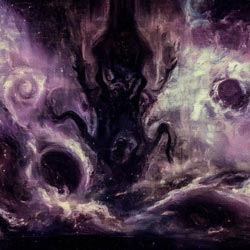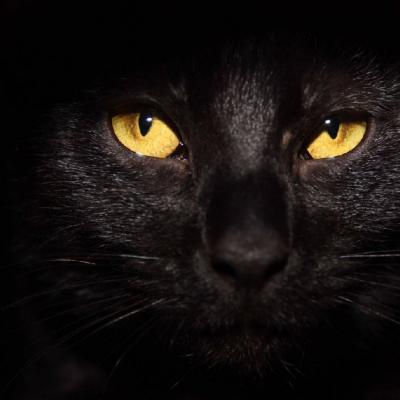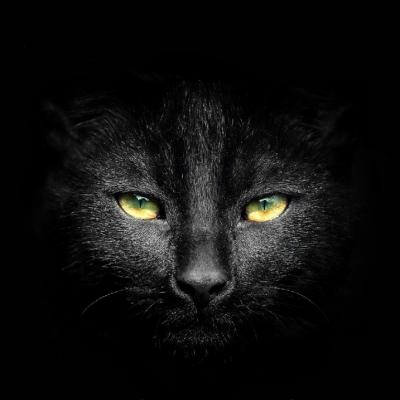 We embark on a spectral journey into the annals of cosmic horror with this comprehensive analysis of "Azathoth" — an illustrious collaboration between Howard Phillips Lovecraft and R.H. Barlow. The review delves into the myriad depths of the tale, revealing the symbolism, existential terror, and the grandeur of the unknowable cosmos, all expertly explored within the shadowy bounds of this chilling narrative.
We embark on a spectral journey into the annals of cosmic horror with this comprehensive analysis of "Azathoth" — an illustrious collaboration between Howard Phillips Lovecraft and R.H. Barlow. The review delves into the myriad depths of the tale, revealing the symbolism, existential terror, and the grandeur of the unknowable cosmos, all expertly explored within the shadowy bounds of this chilling narrative.
In the spectral galleries of cosmic horror, one entity towers above all, an embodiment of the antithesis of human comprehension — Azathoth. His eponymous tale, crafted by the shadowy pens of Howard Phillips Lovecraft and R.H. Barlow, unearths a new degree of eldritch dread, creating a piece of literature as enigmatic as the deity it depicts.
The narrative, though sparsely woven, holds a mirror to the grandeur of the unfathomable. The nameless protagonist's journey towards the "amorphous blight of nethermost confusion", Azathoth, represents our perpetual quest for understanding amidst the indifference of the cosmos. Yet the destination remains obscured, highlighting the futility of our efforts in the face of the great unknown.
With this parable of cosmic insignificance, Lovecraft and Barlow weave a chilling portrait of fear that transcends the mundane, breaking free from the fetters of traditional horror. While critics argue the tale's brevity robs it of narrative depth, the stripped-down prose enhances its ineffability, mirroring the maddening simplicity of the unknowable universe.
In the absence of detailed character development, the real protagonist of "Azathoth" is the universe itself — indifferent, inscrutable, and immeasurably terrifying. Unlike Lovecraft's other creations, Azathoth remains ill-defined, a nebulous horror lurking in the narrative periphery, exemplifying the concept of fear rooted in obscurity and abstractness.
Yet, in this minimalism lies the tale's primary criticism: a sense of incompleteness. Some argue that the story, being a fragment, lacks the elaborate richness found in Lovecraft's more expansive narratives. However, this sketch-like quality imbues "Azathoth" with a unique sense of poetic enigma, an abstract art piece that compels rather than explicates.
Comparatively, "Azathoth" stands as a testament to Lovecraft's evolution as a writer. While maintaining the foundations of cosmic horror found in earlier works, it offers a more distilled, unadorned exploration of his core themes. It remains a crucial piece of the intricate mosaic that constitutes Lovecraft's oeuvre.
In conclusion, "Azathoth", despite its brevity and perceived incompleteness, holds its own in the Lovecraftian universe. Its power lies not in lengthy expositions or detailed characterization, but in the pure, unfiltered dread it induces. Lovecraft and Barlow present a narrative sketch of humanity's futile quest for cosmic comprehension, reminding us that some mysteries are too vast for mortal minds.
This profound exploration of existential terror, condensed into a sparse narrative, distinguishes "Azathoth" as a unique entry in Lovecraft's pantheon of cosmic horrors. Though its minimalism may not appeal to all, those willing to brave its nebulous depths will find a thought-provoking meditation on humanity's place in the cosmos.
The symbolism, the eerie aura, and the deep dive into human insignificance make "Azathoth" an extraordinary journey into the abyss of cosmic horror, solidifying Lovecraft's — and Barlow's — place in the pantheon of horror literature.
Bibliography:
- Cannon, P. (2005). H.P. Lovecraft.
- de Camp, L. S. (1975). Lovecraft: A Biography.
- Derleth, A. (1967). H.P.L: A Memoir.
- Joshi, S.T. (2001). A Dreamer and a Visionary: H. P. Lovecraft in His Time.
- Klein, T. E. D. (1996). Discovering H.P. Lovecraft.
- Schultz, D. E. (2007). An Epicure in the Terrible: A Centennial Anthology of Essays in Honor of H.P. Lovecraft.
- Wymer, N. C. (2018). Lovecraft: Disturbing the Universe.
- Price, R. M., Burleson, D. R., & Campbell, R. W. (2004). The New Lovecraft Circle.
- Skal, D. J. (2001). The Monster Show: A Cultural History of Horror.
- Dziemianowicz, S. (2013). Lovecraft's Library: A Catalogue.
- Simmons, D. (2014). Horror Recognition Guide.
Note: The works of H.P. Lovecraft are in the public domain.
Azathoth
By H. P. Lovecraft
When age fell upon the world, and wonder went out of the minds of men; when grey cities reared to smoky skies tall towers grim and ugly, in whose shadow none might dream of the sun or of spring’s flowering meads; when learning stripped earth of her mantle of beauty, and poets sang no more save of twisted phantoms seen with bleared and inward-looking eyes; when these things had come to pass, and childish hopes had gone away forever, there was a man who travelled out of life on a quest into the spaces whither the world’s dreams had fled.
Of the name and abode of this man but little is written, for they were of the waking world only; yet it is said that both were obscure. It is enough to know that he dwelt in a city of high walls where sterile twilight reigned, and that he toiled all day among shadow and turmoil, coming home at evening to a room whose one window opened not on the fields and groves but on a dim court where other windows stared in dull despair. From that casement one might see only walls and windows, except sometimes when one leaned far out and peered aloft at the small stars that passed. And because mere walls and windows must soon drive to madness a man who dreams and reads much, the dweller in that room used night after night to lean out and peer aloft to glimpse some fragment of things beyond the waking world and the greyness of tall cities. After years he began to call the slow-sailing stars by name, and to follow them in fancy when they glided regretfully out of sight; till at length his vision opened to many secret vistas whose existence no common eye suspects. And one night a mighty gulf was bridged, and the dream-haunted skies swelled down to the lonely watcher’s window to merge with the close air of his room and make him a part of their fabulous wonder.
There came to that room wild streams of violet midnight glittering with dust of gold; vortices of dust and fire, swirling out of the ultimate spaces and heavy with perfumes from beyond the worlds. Opiate oceans poured there, litten by suns that the eye may never behold and having in their whirlpools strange dolphins and sea-nymphs of unrememberable deeps. Noiseless infinity eddied around the dreamer and wafted him away without even touching the body that leaned stiffly from the lonely window; and for days not counted in men’s calendars the tides of far spheres bare him gently to join the dreams for which he longed; the dreams that men have lost. And in the course of many cycles they tenderly left him sleeping on a green sunrise shore; a green shore fragrant with lotus-blossoms and starred by red camalotes.






